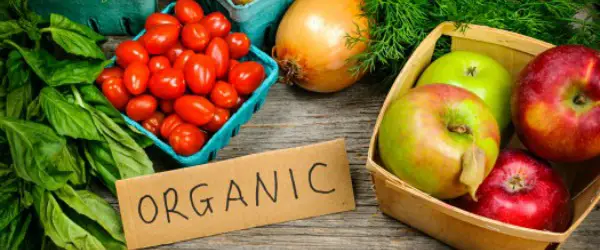Guest Writer for Wake Up World
Natural and organic cosmetics and skin care products are becoming more and more popular, as more of us are addressing our state of wellbeing. Whilst I feel this is a wonderful shift in culture, it can also be quite confronting, confusing and deceiving. If you have recently jumped on the wellness train, and gone through the process of detoxing your bathroom cabinet, then it’s highly likely you’ve come across words such as organic, natural, biodynamic, certified organic, vegan, wild crafted and naturally derived.
But, what do all these words mean?
And then there’s the BDIH, ECOCERT, USDA, ACO (Australian Certified Organic), OFC (Organic Food Chain), NATRUE, Soil Association and many more. Which certification stamp is the best?
It’s no wonder you may be confused, reading contradictory information on the internet, and wondering which beauty product is best. If you’ve been hoodwinked in to thinking that your certified organic brand is better (in terms of purity and performance) than the non certified organic brand that you were contemplating, you’re not alone. But please take a moment to think about what your deciding factor was. Was it the certification stamp that gave you instant assurance? Or did you do your research?
Perhaps your certified organic product is better. But then again, it may not be. Those certification stamps are not as straightforward or trustworthy as you’ve been led to believe.
What if I were to tell you that it’s all a crock of sh*t? Excuse my language but there’s no other way to succinctly phrase it.
There is no universal standard for “certified organic”.
Every organic certification processor has a different set of standards and a different list of what they will allow in a product and what they prohibit. It’s also an expensive process, which deters many fabulous brands (with product made from 70 – 100% organic ingredients) and suppliers (with genuine organic ingredients) who either don’t have the budget to go through the certification process, or those who know better than to follow blindly like sheep without questioning the efficacy of the process.
Still confused? I don’t blame you. It baffled the pants off me when I first started researching it 10+ years ago. Following is a very simplified overview that I hope will help clear the confusion over common buzz words that are used and abused.
Buzz words defined
Natural – naturally occurring in nature, and delivered in its natural form. eg. coconut oil. But is the coconut oil raw? virgin? cold-pressed? or has it been heat treated, bleached and deodorised?
Naturally derived – ingredients first derived from nature, that have been used to artificially create an end ingredient that is delivered in an unnatural form. eg. SLS derived from coconut oil, polysorbates derived from sugar. And guess what … high fructose corn syrup is naturally derived too, and highly hazardous to your health.
Wild crafted – plants that have grown wild in nature without human intervention and ideally harvested following wildcrafting guidelines to ensure a high quality.
Vegan – a product can be ‘vegan’ if the ingredients are plant-based, mineral-based or synthetic.
Organic – strictly speaking organic means relating to, or derived from living matter (i.e. containing carbon molecules). It is loosely used in the beauty industry to mean a product with ingredients that are grown without the use of artificial chemicals. It doesn’t, however, take in to account the various other ingredients that may be in the product that aren’t organic and may or may not be highly toxic.
Certified Organic – there is no universal standard for “certified organic”. It can mean anything from as little as 10% of the ingredients being organic to as high as 95% or more of the ingredients being organic. And a very large grey area of acceptable and unacceptable manufacturing methods permitted by the various certification bodies.
Biodynamic – one of the most ethical and sustainable forms of agriculture in existence. It excludes the use of artificial fertilizers and pesticides and relies on the natural interdependence between all the different components of the farm to create a self-sustaining, balanced and harmonious environment.
Certification Standards
![]() The certifying body for biodynamic farming is Demeter. An international standard. There are no other conflicting biodynamic certification bodies. Demeter certified products haven’t yet become mainstream in Australia. However, in Europe, there are health food stores with shelves and shelves of Demeter-certified goods. My husband and I literally fill our suitcase full of Demeter goods when we’re in Zurich. Let’s hope more and more Australian farmers start the conversion of their farms to Demeter standards so that we can have more availability of biodynamic produce.
The certifying body for biodynamic farming is Demeter. An international standard. There are no other conflicting biodynamic certification bodies. Demeter certified products haven’t yet become mainstream in Australia. However, in Europe, there are health food stores with shelves and shelves of Demeter-certified goods. My husband and I literally fill our suitcase full of Demeter goods when we’re in Zurich. Let’s hope more and more Australian farmers start the conversion of their farms to Demeter standards so that we can have more availability of biodynamic produce.
Still curious? Following is a very brief outline of various certifiers commonly found on cosmetic labels.
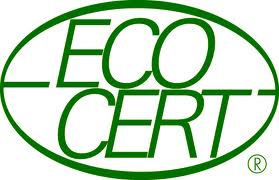 If your products bear the ECOCERT logo then you really might want to double check that ingredient list and method of ingredient sourcing by the manufacturer. ECOCERT is the most misleading standard currently out there. They allow as little as 10% of the ingredients to be organic. They allow various petrochemical ingredients and synthetic preservatives that other certifiers strictly prohibit.
If your products bear the ECOCERT logo then you really might want to double check that ingredient list and method of ingredient sourcing by the manufacturer. ECOCERT is the most misleading standard currently out there. They allow as little as 10% of the ingredients to be organic. They allow various petrochemical ingredients and synthetic preservatives that other certifiers strictly prohibit.
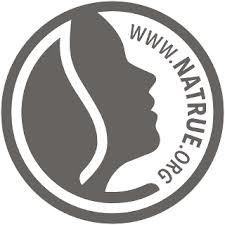 NATRUE has 3 different levels of certification: natural, natural with a portion of organic, and organic. For the highest level of organic certification, at least 95 % of the natural and/or naturally-derived ingredients must come from controlled organic cultivation and/or controlled wild collection. However, NATRUE allow many potentially toxic and irritating ingredients such as synthetic preservatives, sulfates and hydrogenation of oils. But here’s where it gets confusing, NATRUE recognize biodynamic ingredients where other certification bodies don’t. Personally I’m a little perplexed by NATRUE as some very good brands bear this logo and I love that they recognise biodynamics.
NATRUE has 3 different levels of certification: natural, natural with a portion of organic, and organic. For the highest level of organic certification, at least 95 % of the natural and/or naturally-derived ingredients must come from controlled organic cultivation and/or controlled wild collection. However, NATRUE allow many potentially toxic and irritating ingredients such as synthetic preservatives, sulfates and hydrogenation of oils. But here’s where it gets confusing, NATRUE recognize biodynamic ingredients where other certification bodies don’t. Personally I’m a little perplexed by NATRUE as some very good brands bear this logo and I love that they recognise biodynamics.
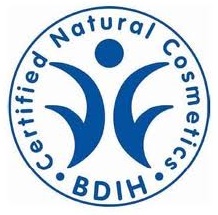 However, a good point to highlight… just because one fabulous brand bears a certification stamp, doesn’t mean that all the other brands with the same certification stamp have the same level of purity (due to the sliding scale of organic content requirement), performance (delivering similar results) or ethical standards.
However, a good point to highlight… just because one fabulous brand bears a certification stamp, doesn’t mean that all the other brands with the same certification stamp have the same level of purity (due to the sliding scale of organic content requirement), performance (delivering similar results) or ethical standards.
The BDIH is a natural certification body. Meaning that the product does not need to contain organic ingredients. Herein lies the highly probable risk of pesticide residue. They allow synthetic preservatives but prohibit the use of certain petrochemicals that other organic certifiers allow.
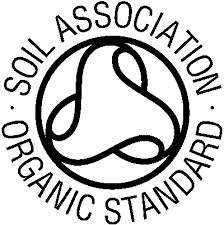 The Soil Association has stricter standards than ECOCERT, NATRUE and BDIH with a sliding scale of 70% organic content for the product to bear the “made with organic” certification and 95% organic content for the “organic” certification stamp of approval. BUT, they allow certain synthetic preservatives and foaming agents that are renowned skin irritants, as well as frequently being found to be contaminated with the -amine group of chemicals that can react with other substances in your products to form another class of chemicals called nitrosamines, most of which are carcinogenic.
The Soil Association has stricter standards than ECOCERT, NATRUE and BDIH with a sliding scale of 70% organic content for the product to bear the “made with organic” certification and 95% organic content for the “organic” certification stamp of approval. BUT, they allow certain synthetic preservatives and foaming agents that are renowned skin irritants, as well as frequently being found to be contaminated with the -amine group of chemicals that can react with other substances in your products to form another class of chemicals called nitrosamines, most of which are carcinogenic.
 The USDA, OFC and ACO have stricter standards than those mentioned above, with a sliding scale of 70% organic content for the product to bear the “made with organic” certification and 95% organic content for the “organic” certification stamp of approval. BUT… just because the product bears either one of these logos, it does not mean that it contains superior ingredients than brands that aren’t certified.
The USDA, OFC and ACO have stricter standards than those mentioned above, with a sliding scale of 70% organic content for the product to bear the “made with organic” certification and 95% organic content for the “organic” certification stamp of approval. BUT… just because the product bears either one of these logos, it does not mean that it contains superior ingredients than brands that aren’t certified.
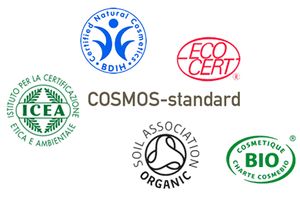 And then there’s the latest COSMOS Standard that is bringing together 5 certifiers: BDIH, Soil Association, Ecocert, ICEA and CosmeBIO. Whilst this at first sounded quite promising in terms of a more “standard” definition of what certified organic might mean, this is a partnership that has left my jaw dropped since first talking with one of it’s representatives and reading their Standards and Licence Fees.
And then there’s the latest COSMOS Standard that is bringing together 5 certifiers: BDIH, Soil Association, Ecocert, ICEA and CosmeBIO. Whilst this at first sounded quite promising in terms of a more “standard” definition of what certified organic might mean, this is a partnership that has left my jaw dropped since first talking with one of it’s representatives and reading their Standards and Licence Fees.
Some manufacturers are having to step up to a more strict compliance, whereas others are compromising their existing high standards to drop down to meet a middle ground with the others. COSMOS will allow the following known irritants and toxic chemicals, to mention just a few examples of those that initially jump out as ingredients that you;d be much better off steering clear of: various preservatives and denaturing agents from petrochemical origin, various petrochemical molecules, Bismuth Oxychloride (skin irritant), Mica (skin irritant and linked with child labour) and Carmine (part of insects).
Then there are the Licence Fees. This is my other main concern about the entire certified organic industry. Some certifiers demand a percentage of profits based on the previous year’s turnover of products or ingredients that bear their certified organic logo. What this means to you as the consumer, is an increase in the end price of the product. Why? because the significant fees that are involved in obtaining that certified organic logo are factored in to the pricing. It is also, not just a one off fee. It is an annual fee that is charged year after year, and a hidden trap for the brand owner, as it doesn’t exactly look great if the brand decides not to renew their certification logo with the certifier. Public perception would undoubtedly be something along the lines of “perhaps they are not genuinely organic anymore”.
Product Comparison
Following is an example of two skincare products marketed as Cleansing Balms:
Full list of ingredients for the certified organic cleansing balm:
caprylic/capric triglyceride, glycerin, sunflower seed oil*, water, sucrose laurate, sucrose palmitate, parfum (natural fragrance), tocopherol.
* ingredients from organic farming
Full list of ingredients for the cleansing balm that is not certified:
sunflower seed oil*, virgin coconut oil*, chamomile flower*, marigold flower*, raw shea butter*, candelilla wax, carrot root*, rosehip fruit oil*, natural vitamin E in GMO-free soybean oil, orange essential oil*, petitgrain essential oil*, rosemary leaf extract*, bog myrtle essential oil, neem seed oil*.
* ingredients from organic farming and wild crafted
(Product contains 90% organic ingredients).
Considering the first 3 ingredients of a product make up the majority of the ingredients, I know which one I’d prefer to use on my skin. Especially as the certified organic product only contains one organic ingredient, whereas the product that is not certified organic contains a much higher percentage of organic ingredients as well as being totally transparent in informing the actual percentage of organic ingredients. Having personally tried both products, there isn’t a comparison in terms of effectiveness. The certified organic cleansing balm was unimpressive to say the least. The non certified organic cleansing balm was an absolute heavenly experience that removed all traces of makeup and left my skin feeling clean and fresh, soft and smooth, as well as nourished and hydrated.
So, what’s a girl to do?
1 : Read the full ingredient list. The first 3 ingredients typically make up the majority of a product. Not always the case, but it’s a fairly safe bet. Look out for any hidden nasties, most likely words that don’t look or sound anything like a botanical plant name.
2 : Get to know the brand you are planning on using. Are they owned by a big multinational that is more concerned with profitability than the long term health and appearance of your skin and wellbeing? Do they source their ingredients ethically?
3 : Most importantly … follow your knowing. Try a product and determine the results for yourself. If you aren’t impressed, try another brand. Sooner or later you’ll find the right beauty brand for you.
4 : Remember the fundamental truth that applies to everything in your life. There is no-one else that knows what is better for you, than you.
Over the years I’ve tried a ridiculous number of so-called natural, organic, and certified organic brands. The brands that I’ve found to be superior in terms of purity (organic, wildcrafted and biodynamic ingredients, no nasties etc), performance (delivering beautiful results) and with ethical standards that tick all my vegan, cruelty-free and sustainability boxes, and most are not certified organic. But that’s what works best for me.
If in doubt, always go with what feels light, and what is right for you. Only you know what is best for you.
About the author:
 Samantha Sargent is an holistic nutritionist and founder of benaturallyou.com, as well as Be Genki, a range of organic, GM-free, vegan and cruelty-free health and beauty products.
Samantha Sargent is an holistic nutritionist and founder of benaturallyou.com, as well as Be Genki, a range of organic, GM-free, vegan and cruelty-free health and beauty products.
Sam has studied to be a personal trainer and nutritionist, as well as make-up artistry and skin care. She is regularly interviewed for her advice for the health and beauty pages of magazines such as Vogue, Marie Claire, InStyle, Women’s Health, Nature & Health, Women’s Health & Fitness, Cleo and Better Health (to name just a few) and has been described as “the natural beauty buff” by Vogue Australia.
Optimistic and family-oriented, Sam is profoundly inspired by the talent, enthusiasm and initiative of younger generations, and equally inspired by her grandmothers, who she describes as “the most gracious women I have ever known”. She has a consuming love for the beach, countryside and nature, as well as travel (anywhere and everywhere), meditation, cooking, gardening and Zen Ki yoga. Never without a cup of herbal tea, she also enjoys making vegan choices for her daily diet, skin care rituals and fashion purchases.
You can connect with Samantha at benaturallyou.com or facebook.com/benaturallyou.

If you've ever found value in our articles, we'd greatly appreciate your support by purchasing Mindful Meditation Techniques for Kids - A Practical Guide for Adults to Empower Kids with the Gift of Inner Peace and Resilience for Life.
In the spirit of mindfulness, we encourage you to choose the paperback version. Delve into its pages away from screen glare and notifications, allowing yourself to fully immerse in the transformative practices within. The physical book enriches the learning process and serves as a tangible commitment to mindfulness, easily shared among family and friends.
Over the past few years, Wake Up World has faced significant online censorship, impacting our financial ability to stay online. Instead of soliciting donations, we're exploring win-win solutions with our readers to remain financially viable. Moving into book publishing, we hope to secure ongoing funds to continue our mission. With over 8,500 articles published in the past 13 years, we are committed to keeping our content free and accessible to everyone, without resorting to a paywall.

